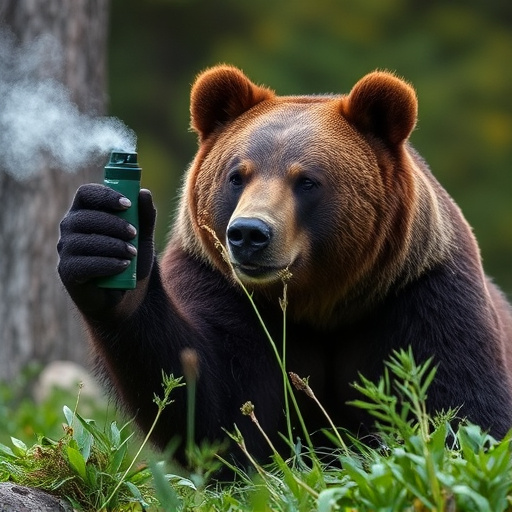Bear spray effectiveness relies on storage temperature between -40°F to 120°F (-40°C to 49°C). Ideal conditions for use include low winds and moderate humidity. Store bear repellent in a cool, dry place (50°F-70°F/10°C-21°C) away from children and pets to maximize lifespan and protection while outdoor activities in Alaska.
Alaska’s vast wilderness presents unique challenges when it comes to bear safety. Understanding the maximum range of bear repellents is crucial for outdoor enthusiasts and residents alike. This article delves into the essential aspects, starting with Alaska’s specific regulations on bear repellent. We explore factors like weather conditions and terrain that influence the spray’s reach. Additionally, we reveal the optimal storage temperature for peak effectiveness, ensuring your bear spray is ready when you need it most in this rugged landscape.
- Understanding Alaska's Bear Repellent Requirements
- Factors Affecting Bear Spray Range
- Optimal Storage Conditions for Maximum Effectiveness
Understanding Alaska's Bear Repellent Requirements
Alaska’s unique ecosystem and diverse wildlife, including bears, require a specific approach to safety and protection. When it comes to bear repellent, understanding the maximum range is just the first step. The state has established guidelines to ensure the effectiveness of these repellents, especially when venturing into bear country.
One critical factor is the proper storage and usage temperature of bear spray. It’s essential to keep your spray within the recommended range, typically between -40°F to 120°F (-40°C to 49°C). This ensures that the chemicals remain potent and ready for use when needed. Adhering to these requirements is vital for maximum protection during outdoor activities in Alaska’s beautiful but bear-inhabited regions.
Factors Affecting Bear Spray Range
The range at which bear repellent, specifically spray, is effective can vary greatly and is influenced by several key factors. One critical element is proper temperature for bear spray storage. Extreme temperatures can significantly impact the spray’s performance. For instance, if stored in very cold conditions, the liquid contents may solidify, reducing its mobility and thus decreasing the range of projection. Conversely, high temperatures can cause the spray to evaporate too quickly, limiting its reach.
Additionally, factors like humidity, wind speed and direction, terrain elevation, and even the type of bear repellent all play a role in determining maximum range. Bear spray typically works best when used in open areas with low wind, as strong winds can carry the spray away from its intended target. Humidity levels and terrain elevation can also affect how far the spray can travel, with moist conditions sometimes enhancing projection while elevated terrains can disrupt the spray’s path due to gravity.
Optimal Storage Conditions for Maximum Effectiveness
To maintain maximum effectiveness, bear repellent should be stored under optimal conditions. The proper temperature for bear spray storage is crucial; it needs to be kept in a cool and dry place, ideally between 50°F to 70°F (10°C to 21°C). Extreme temperatures can degrade the active ingredients over time, reducing the repellent’s range and potency. Avoid leaving it in direct sunlight or in areas prone to freezing or heat extremes.
Additionally, bear repellents should be stored out of reach from children and pets. It’s recommended to keep them in a secure location, such as a locked cabinet or high shelf. This not only ensures their safety but also maintains the integrity of the product. Proper storage conditions will help extend the lifespan of your bear repellent, ensuring you have maximum protection when venturing into Alaska’s wilderness.
In conclusion, understanding the optimal storage conditions and factors affecting the range of bear repellent in Alaska is crucial for ensuring maximum effectiveness. By maintaining the proper temperature for bear spray storage and considering environmental influences, you can extend the lifespan and potency of your repellent. Remember that knowledge of these key aspects enables residents and visitors alike to navigate Alaska’s wilderness with enhanced safety and peace of mind when encountering bears.
